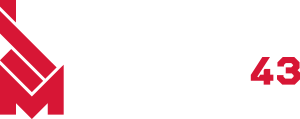Mission43’s Education Discovery Series: Aviation
Session 2 of Mission43’s Education Discovery Series: Aviation features Spencer Widman, Army National Guard C12 pilot and First Officer for American Airlines. Spencer shares his experience as a military aviator transitioning into commercial airlines employment.
Becoming a Commercial Airline Pilot
The process to become a commercial pilot is long, the barriers to entry (like cost) are high, but even though it takes a lot of work, the potential is unlimited.
In the previous session of Mission43’s Education Discovery Series: Aviation, we talked about the methods, flight hours, and financial commitment required at each step. To become a commercial airline pilot, at minimum, you’ll need to do the following:
Obtain a Class 1 or 2 medical certificate
Earn a Private Pilot Certificate
Earn the Instrument Rating
Obtain a Commercial Pilot Certificate
Become a Certified Flight Instructor
Add the Multi-Engine Rating
Earn a Airline Transport Pilot Certificate
When it comes to gaining employment with a legacy carrier, the amount and quality of your flying hours count! According to 2020 Bureau of Labor Statistics data, the median annual salary for airline and commercial pilots is $130,440. Airline pilots will usually start their careers as first officers, with pay increasing as they gain experience and seniority.
Pilot Shortage
Because of the pilot shortage, companies are getting creative with recruiting strategies. Many of the most recognizable carriers have cadet program partnerships that work with universities and flight schools, and offer financial assistance to Flight Instructors in affiliate programs.
American Airlines: Envoy Cadet Program
Delta: Propel Pilot Career Path Program
JetBlue: Gateway Select
*SkyWest: Pilot Pathway Program
*SkyWest is partnered with Silverhawk Aviation Academy and Treasure Valley Community College.
Contact us
If you’re thinking about starting a career in aviation and want more information, contact a Mission43 education advisor today!

